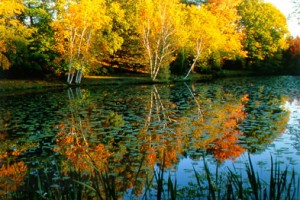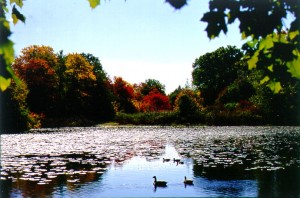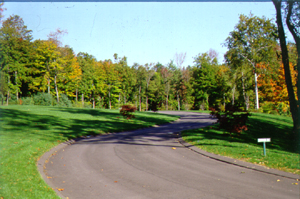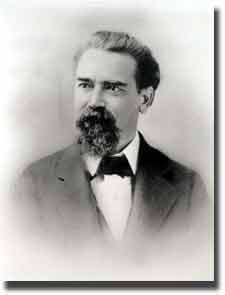Cedar Hill’s Distinguished Heritage
 Until the late 18th century, burial customs in America were conducted in a practical manner. The early settlers buried their dead in the traditions of their homelands with little ceremony or thought to commemorate the deceased. By the early 19th century, colonial burying grounds and churchyards located in rapidly expanding towns and cities were becoming overcrowded and neglected. As the century progressed, there was a growing public attitude that a cemetery should fill a larger purpose than merely serve as a place for interment. The answer to these issues was the development of what we know today as the American “rural” cemetery.
Until the late 18th century, burial customs in America were conducted in a practical manner. The early settlers buried their dead in the traditions of their homelands with little ceremony or thought to commemorate the deceased. By the early 19th century, colonial burying grounds and churchyards located in rapidly expanding towns and cities were becoming overcrowded and neglected. As the century progressed, there was a growing public attitude that a cemetery should fill a larger purpose than merely serve as a place for interment. The answer to these issues was the development of what we know today as the American “rural” cemetery.
Established in 1831, Mount Auburn Cemetery in Cambridge, Massachusetts, was the first cemetery developed in the “rural” style. Mount Auburn was located away from the town’s center and designed in a park-like manner. The cemetery’s innovative landscape was complete with the winding paths and shady glens thought appropriate then for contemplating the solemnity of death. Mount Auburn, with its contemporaries across America, set the tone for a rapidly expanding movement in cemetery development.
Cedar Hill Cemetery is Founded
By the summer of 1863, Hartford needed a place of burial satisfactory to its practical as well as aesthetic Victorian-era requirements. In response, a group of prominent Hartford citizens met to discuss establishing a new cemetery. These gentlemen asked Hartford’s Park Superintendent, Jacob Weidenmann, to aid them in identifying a location for the new cemetery that was “sufficiently removed from the city, possessing suitable soil and the largest number of other desirable characteristics, such as variety of surface, beauty of landscape and running water”.
The committee studied a number of sites before agreeing on several farm properties that contained all of the features desirable for the development of a rural cemetery. Adolph Strauch, Superintendent of Spring Grove Cemetery in Cincinnati, later visited the site, remarking that he had “never seen the spot that has so many advantages as this or so splendid a landscape.” A committee appointed to negotiate the property purchase found that the desired location included nine parcels of land, each belonging to different individuals or estates. Some owners were unwilling to sell at a reasonable price. Others could not convey their land because of inheritance restrictions. To resolve the problem, the General Assembly passed a bill in. May 1864 granting the institution the power to acquire the land by eminent domain, which was done.
Construction of the new cemetery began in September 1865 under the supervision of its first Superintendent, Jacob Weidenmann. Although the first burial took place on July 17, 1866, various factors delayed the official consecration ceremony until the summer of 1868. Cedar Hill’s historic landscape played a significant role in American cemetery development. Designed by landscaping pioneer, Jacob Weidenmann, Cedar Hill’s innovative layout became the guiding principle for Weidenmann’s book, Modern Cemeteries, published in 1888.
While the landscape incorporates the best features of earlier prototypes, it also includes several features unique in rural cemetery design. The burial plots are smaller than those of its contemporaries and not always contiguous. This arrangement allows for plantings in the spaces between the lots and creates vistas unbroken by hedges or curbing. Drives following the natural sweep of the terrain in a graceful, curving manner are basic to the landscape design.
Perhaps the most impressive feature of the landscape is the ornamental foreground that effectively secludes the burial sections of the cemetery from the roadway. Much of Cedar Hill’s wildlife is sustained in this natural habitat of water and woodlands that contains more than 65 acres of open space landscape and ponds.
 The largest of the ponds is Llyn Mawr, whose name means “great lake.” Entirely man-made, Llyn Mawr covers about eight acres of the foreground along the entrance avenue. As the main entrance to the cemetery grounds, the foreground later was enhanced by the Superintendent’s Cottage in 1875, the Northam Chapel in 1882 and the Gallup Memorial Gateway in 1889. Together, they form the cemetery entrance as it exists today.
The largest of the ponds is Llyn Mawr, whose name means “great lake.” Entirely man-made, Llyn Mawr covers about eight acres of the foreground along the entrance avenue. As the main entrance to the cemetery grounds, the foreground later was enhanced by the Superintendent’s Cottage in 1875, the Northam Chapel in 1882 and the Gallup Memorial Gateway in 1889. Together, they form the cemetery entrance as it exists today.




